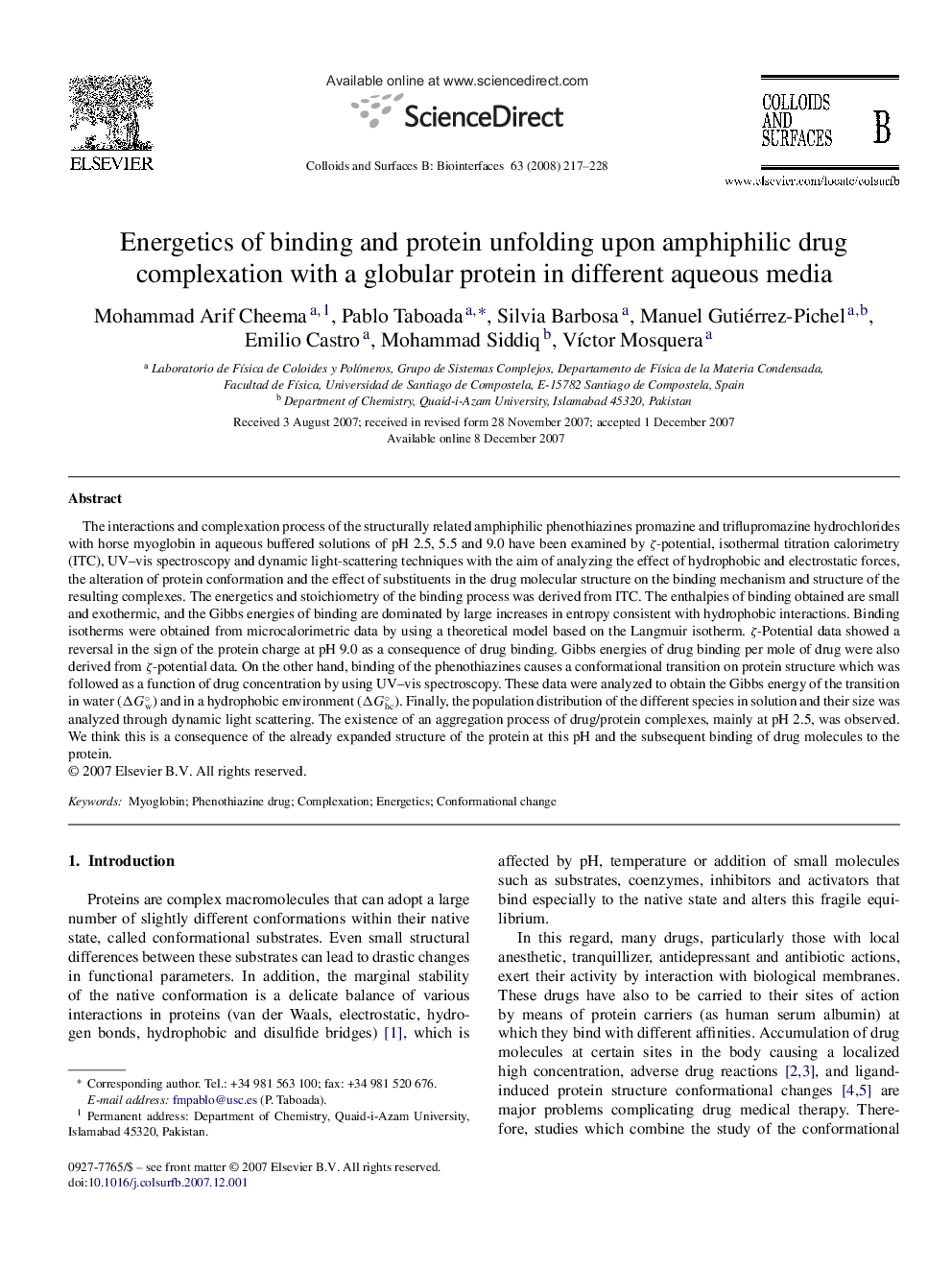| Article ID | Journal | Published Year | Pages | File Type |
|---|---|---|---|---|
| 602354 | Colloids and Surfaces B: Biointerfaces | 2008 | 12 Pages |
The interactions and complexation process of the structurally related amphiphilic phenothiazines promazine and triflupromazine hydrochlorides with horse myoglobin in aqueous buffered solutions of pH 2.5, 5.5 and 9.0 have been examined by ζ-potential, isothermal titration calorimetry (ITC), UV–vis spectroscopy and dynamic light-scattering techniques with the aim of analyzing the effect of hydrophobic and electrostatic forces, the alteration of protein conformation and the effect of substituents in the drug molecular structure on the binding mechanism and structure of the resulting complexes. The energetics and stoichiometry of the binding process was derived from ITC. The enthalpies of binding obtained are small and exothermic, and the Gibbs energies of binding are dominated by large increases in entropy consistent with hydrophobic interactions. Binding isotherms were obtained from microcalorimetric data by using a theoretical model based on the Langmuir isotherm. ζ-Potential data showed a reversal in the sign of the protein charge at pH 9.0 as a consequence of drug binding. Gibbs energies of drug binding per mole of drug were also derived from ζ -potential data. On the other hand, binding of the phenothiazines causes a conformational transition on protein structure which was followed as a function of drug concentration by using UV–vis spectroscopy. These data were analyzed to obtain the Gibbs energy of the transition in water (ΔGw°) and in a hydrophobic environment (ΔGhc°). Finally, the population distribution of the different species in solution and their size was analyzed through dynamic light scattering. The existence of an aggregation process of drug/protein complexes, mainly at pH 2.5, was observed. We think this is a consequence of the already expanded structure of the protein at this pH and the subsequent binding of drug molecules to the protein.
